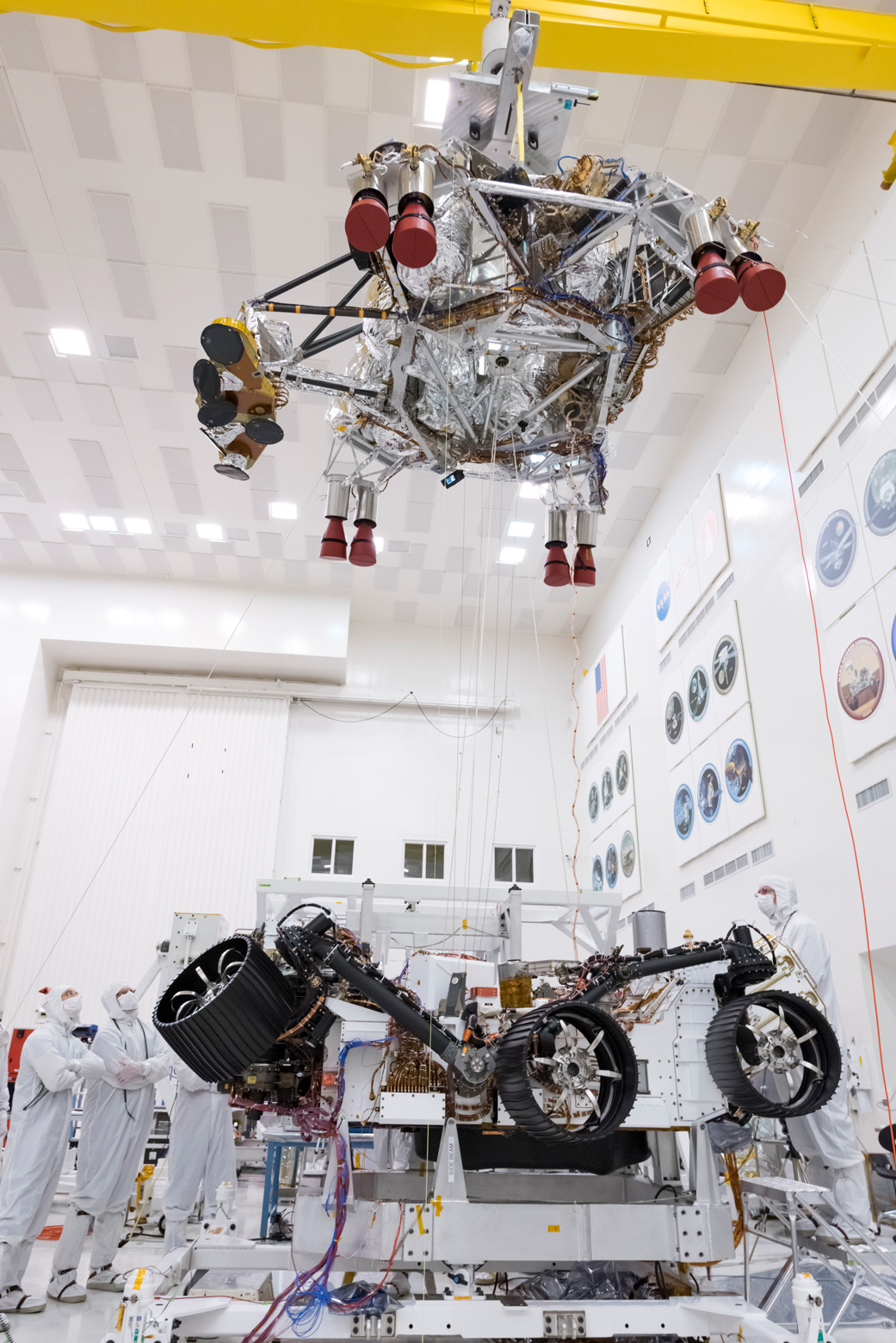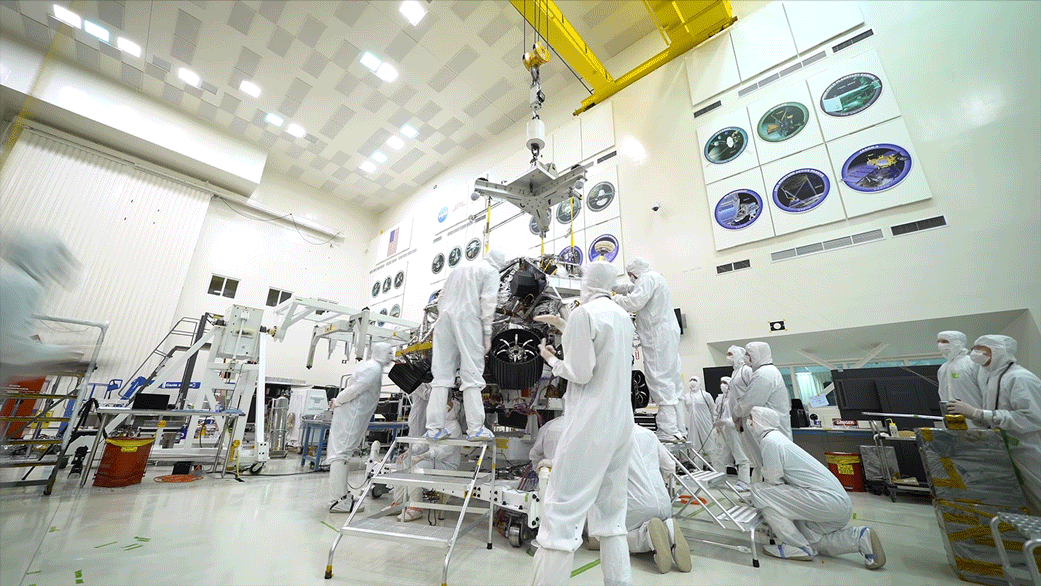In this picture from Sept. 28, 2019, engineers and technicians working on the assembly and testing of the Mars 2020 spacecraft look on as a crane lifts the rocket-powered descent stage away from the rover. They’ve just completed a successful separation test at NASA’s Jet Propulsion Laboratory in Pasadena, California.
“Firing the pyrotechnic devices that held the rover and descent stage together and then doing the post-test inspection of the two vehicles was an all-day affair,” said Ryan van Schilifgaarde, a support engineer for Mars 2020 assembly at JPL. “With this test behind us, the rover and descent stage go their separate ways for a while. Next time they are attached will be at the Cape next spring during final assembly.”
Both the rover and descent stage will ship to Cape Canaveral, Florida, this winter. Before then there’ll be a battery of tests for the Mars 2020 rover, including an evaluation of its computers and mechanical systems in Mars-like conditions. Called the Surface Thermal Test, it involves subjecting the car-size Mars vehicle to atmospheric pressures and temperatures similar to those it will encounter on the Red Planet.
JPL is building and will manage operations of the Mars 2020 rover for NASA. The rover will launch on a United Launch Alliance Atlas V rocket in July 2020 from Space Launch Complex 41 at Cape Canaveral Air Force Station. NASA’s Launch Services Program, based at the agency’s Kennedy Space Center in Florida, is responsible for launch management.
When the rover lands at Jezero Crater on Feb. 18, 2021, it will be the first spacecraft in the history of planetary exploration with the ability to accurately retarget its point of touchdown during the landing sequence.
Charged with returning astronauts to the Moon by 2024, NASA’s Artemis lunar exploration plans will establish a sustained human presence on and around the Moon by 2028. We will use what we learn on the Moon to prepare to send astronauts to Mars.
Interested K-12 students in U.S. public, private and home schools can enter the Mars 2020 Name the Rover essay contest. One grand prize winner will name the rover and be invited to see the spacecraft launch in July 2020 from Cape Canaveral.
https://mars.nasa.gov/mars2020/participate/name-the-rover/
For more information about the mission, go to:
https://mars.nasa.gov/mars2020/
DC Agle
Jet Propulsion Laboratory, Pasadena, Calif.
818-393-9011
agle@jpl.nasa.gov
Alana Johnson
NASA Headquarters, Washington
202-672-4780
alana.r.johnson@nasa.gov
2019-200




























